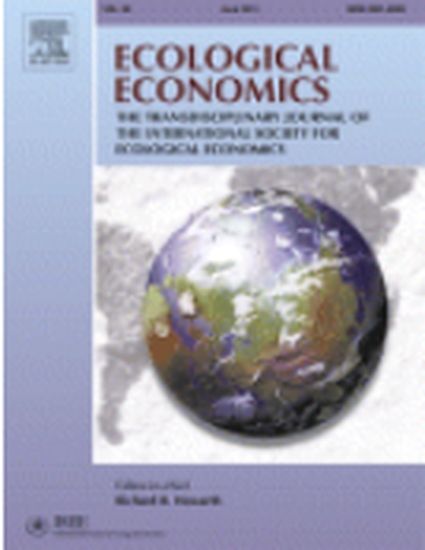
Article
Evolution and empirical estimation of ecological-economic production possibilities frontiers
Ecological Economics
(2013)
Abstract
This paper presents a graphical model of an ecological-economic production possibilities frontier (EEPPF) that explicitly considers the roles of market failure and technological asymmetry in the provision of ecosystem goods and services. An empirical example of a 6-dimensional EEPPF is provided using a watershed in Illinois where three provisioning ecosystem services (corn, soybeans, hay) and three regulating services (flood control, water quality, and carbon retention) are the objectives. When aggregated, provisioning and regulatory services form a linear-to-convex EEPPF, but regulatory services can be increased from 10 to over 90% of optimal with a reduction in provisioning services (crops) from 100 to 78% of optimal. While corn and soybeans are shown to form a trade-off with all other ecosystem services, hay is complementary with flood control, water quality and carbon retention. These three regulating services are complementary with one another, with water quality and carbon correlated at 0.80. These results demonstrate the use of GIS, distributed watershed models such as SWAT, and genetic algorithms as a valuable method to estimate empirical EEPPFs.
Disciplines
Publication Date
2013
DOI
https://doi.org/10.1016/j.ecolecon.2013.02.012
Citation Information
Christopher L. Lant. "Evolution and empirical estimation of ecological-economic production possibilities frontiers" Ecological Economics Vol. 90 (2013) p. 1 - 9 Available at: http://works.bepress.com/christopher_lant/176/
